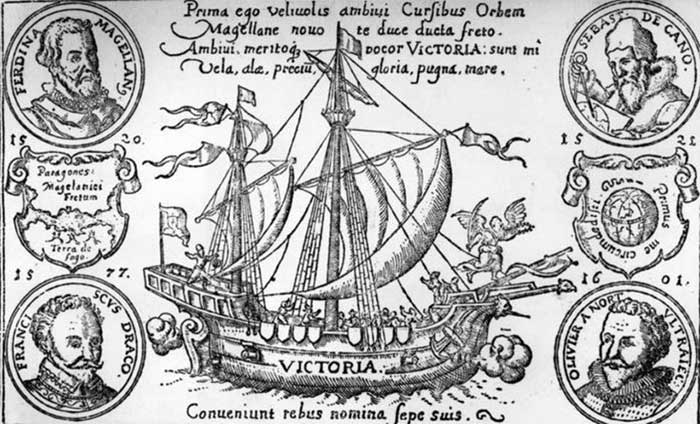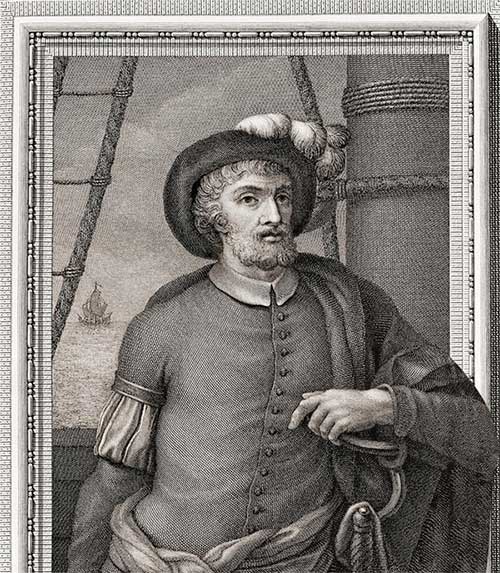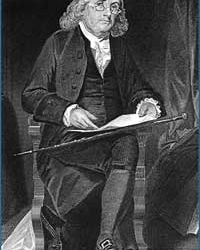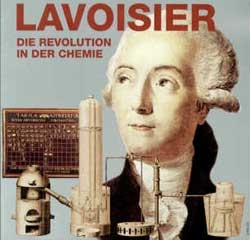In 1522, humans completed the first circumnavigation of the globe by sea.
Many people believe that explorer Ferdinand Magellan achieved this remarkable feat. However, in reality, he played a significant role in this historic voyage, while Juan Sebastián Elcano, a member of his crew, was the one who completed it.

Engraving of the Victoria ship in 1580, featuring portraits of Ferdinand Magellan (left, above) and Juan Sebastián Elcano (right, above).
Joining the Expedition
Juan Sebastián Elcano was born in the port town of Getaria, located in the Basque Country on the northern coast of the Atlantic Ocean in Spain. Many believe he was born in 1476, but recent documents indicate it was actually in 1487. He came from a wealthy family with eight siblings and received a good education.
Young men in Getaria at that time often made their living through fishing and whaling, sometimes venturing as far as the rich fishing grounds off Newfoundland. It is likely that Elcano also engaged in these activities, as he had the experience and resources to purchase a 200-ton ship.
Historians speculate that a business failure forced Elcano to sell his ship to an Italian, an illegal act at the time. Many years later, when Elcano became a national hero, King Charles pardoned him. This amnesty provided historians with insights into Elcano’s life as a shipowner.
Possibly due to the loss of his means of livelihood, in 1519, Elcano joined the Concepcion as the ship’s first mate. This vessel was one of five ships prepared for a long and perilous journey under the command of Ferdinand Magellan, a Portuguese national.
The mission of the fleet was not to circumnavigate the globe but to challenge Portugal’s dominance over maritime trade, Spain’s economic rival. Magellan’s plan was to find a westward route to the Spice Islands, renowned for their spices.
The Death of Magellan
The fleet set sail from Seville on August 10, 1519. Heading west towards South America, Magellan sought a waterway connecting the Atlantic Ocean to another great ocean. However, after many days, disappointment soon engulfed the expedition, leading to tensions between Magellan and the Spanish crew members. A mutiny occurred at the San Julián harbor in Patagonia.
Two captains rebelled against Magellan, and Elcano, as the first mate of the Concepcion, also participated. Ultimately, Magellan gained the upper hand, executing the two rebellious captains and pursuing another leader who had fled. He did not execute Elcano but stripped him of his rank and demoted him to crew member.
In November 1520, after losing two ships—San Antonio returned to Spain without permission and Santiago sank—Magellan and the remaining crew became the first Europeans to enter the Pacific Ocean from the Atlantic after rounding the southern tip of South America.
Crossing the Pacific, they reached the Philippines, where in April 1521, Magellan was killed in a skirmish with the people of Mactan. A few days later, the king of Cebu, considered an ally by the Spanish, invited the surviving captains of the expedition to dine and unexpectedly massacred them. Elcano, due to his lower status after the mutiny, was not invited to the feast, which allowed him to survive.
After the massacre, about one hundred crew members remained, escaping on the two ships Trinidad and Victoria, while the Concepcion was sunk.
The Circumnavigation Journey

Juan Sebastián Elcano, engraving from 1791.
In September 1521, Gonzalo Gómez de Espinosa was elected commander of the fleet and captain of the Trinidad, while Elcano became his deputy, responsible for the Victoria. Eventually, they reached the Moluccas in November of that year.
In the following weeks, Elcano and Espinosa completed treaties with the kings of nearby islands and prepared for the long journey home. While loading cargo, a serious leak occurred on the Trinidad.
Consequently, they agreed to separate: the Victoria would head west towards Africa, while Trinidad would repair and then sail east towards Panama. However, Trinidad encountered difficulties, had to return to the Spice Islands, and was ultimately destroyed.
On December 21, 1521, the Victoria set sail. Under Elcano’s command, the ship headed southwest through the Malay Archipelago with 60 crew members. In February, Elcano entered the Indian Ocean, achieving one of the greatest maritime feats in history. This was the first time a European crossed the vast seas at its widest point.
For many months, without sighting land, the crew navigated the ship through fierce winds. Many died during this time. After rounding the Cape of Good Hope, the crew, in a state of severe hunger, forced Elcano to stop at the Cape Verde Islands.
Here, some crew members were captured by Portuguese forces. Fearing the loss of their valuable cargo, Elcano quickly set sail again. The weary crew finally sighted the southern coast of Spain in the fall of 1522.
Upon meeting the King of Spain, Elcano was awarded a shield featuring a globe inscribed with the Latin phrase “You are the first to circumnavigate me.” Despite achieving this monumental accomplishment, Elcano left behind very few records. Historians only have the account of his journey sent to King Charles upon his return and his responses to a questionnaire from a court official.
Elcano never married, and both of his illegitimate children died young. In 1525, he participated in another expedition to the Moluccas, and a year later, before reaching the Spice Islands again, Elcano died of scurvy (a blood disease caused by a lack of vitamin C in the daily diet). In a simple ceremony, his body was cast into the Pacific Ocean, resting in the depths of the sea.





















































